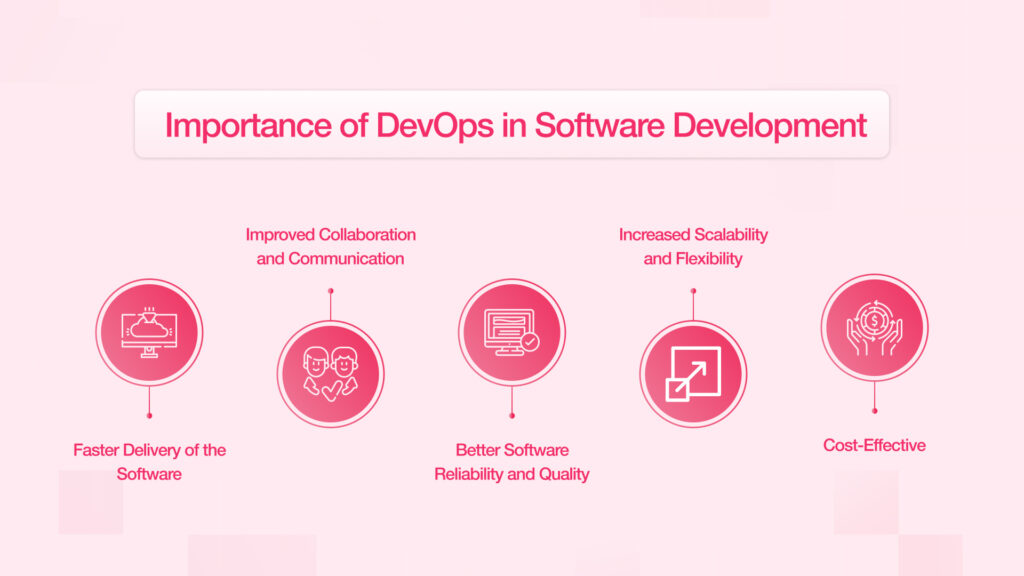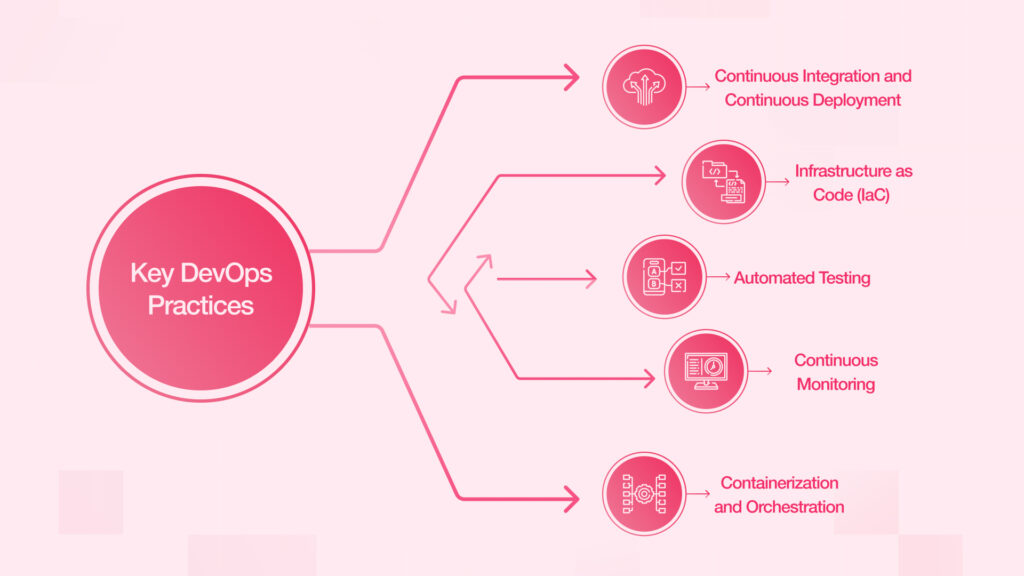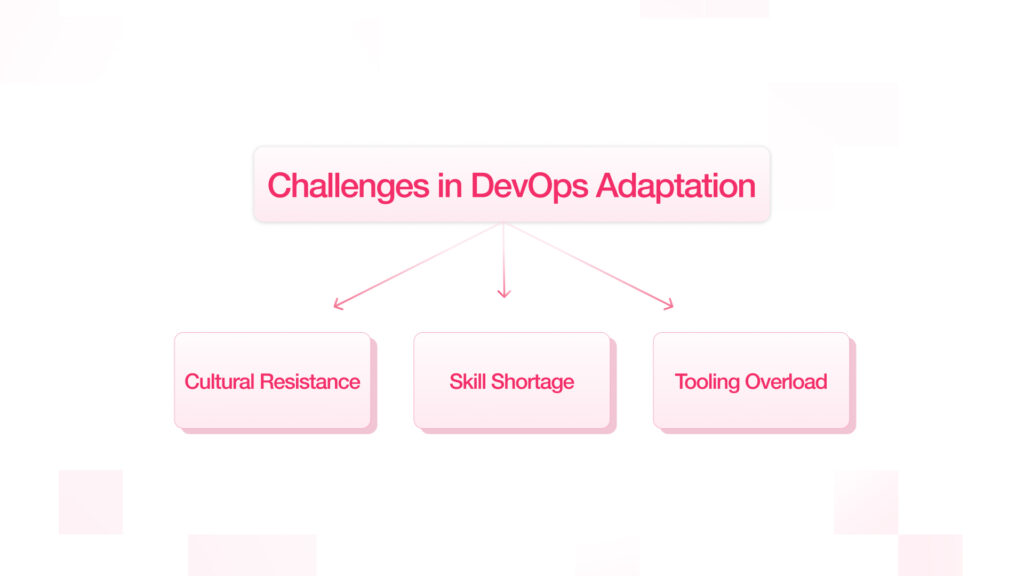Role of DevOps in Modern Business Software Development
In the present-day software engineering plane, DevOps has become a sort of fundamental methodology. This framework promotes and fosters a culture of mutual collaboration between development and operations teams, thus speeding development cycles, maximizing quality, and improving scalability; these three factors are indispensable to any business aiming to remain competitive in today’s fast-paced digital world.
- April 8, 2025
- by Tarun


Rapid software delivery and high software quality have never been more in demand than today. Businesses are under pressure to roll out products and updates within short time while ensuring the software’s security, reliability, and function. The traditional development models, with their rigidity and long cycles, are finding it harder to deliver on such requirements. In this regard, DevOps assists in changing the ways businesses develop test and deploy their software.
DevOps, rather than a tool or methodology, is a culture or a compilation of practices that encourage communication and integration among development and IT operations teams. DevOps intends to break down the barriers that traditionally have separated these two groups to foster collaboration throughout the software development lifecycle. DevOps automates, integrates, delivers, and monitors software development and delivery faster with an emphasis on the best quality, reliability, and security.
In this article, we will introduce how DevOps occupies a role in current business software applications, its primary benefits and best practices, tools supporting the proper implementation of DevOps, and the challenges that businesses may encounter during the adoption of DevOps. Thus, it will immerse businesses in all the elements that would help them well appreciate the powers of DevOps in meeting the needs of an entirely digital age.
What is DevOps?
DevOps is the practice of getting development and operations teams to work together well, while the name itself is a mash-up of “Development” (Dev) and “Operations” (Ops), meaning different specific practices that seek to unify software development and IT operations. DevOps in Modern Business Software Development helps to shorten the development life cycle, increase the frequency of deployment, and ensure more reliable software.
Development and operations teams traditionally used to isolate themselves from each other. Developers would create the code and then hand it over to operations for deployment. As a result, misunderstandings, delays, and errors arose when there was a lack of responsiveness to the development team’s vision with respect to deployment and especially when the system failed during deployment. The industry created DevOps to improve collaboration, enable continuous feedback, and automate software delivery through all stages of development.
Why is DevOps Critical for Modern Business Software Development?
With every few seconds in today’s fast-paced business world, the pressure to innovate becomes heavier. Customers expect businesses to adapt quickly and release new features, bug fixes, and security patches. DevOps plays an integral role in helping achieve these objectives by transforming the entire process of development.

Faster Delivery for Software Updates
In the past, teams often released software updates to businesses every two or three months, following prolonged testing and manual intervention. DevOps came as a saviour to enable small updates at frequent intervals, along with making it faster for the development process to test and deploy them. Continuous integration and continuous delivery (CI/CD) pipelines ensure that developers can automatically integrate their code into the production environment, making it easier to release updates faster. Automating manual processes, such as testing and deployment, produces fewer human errors while speeding up production and getting features into the market faster.
Improved Collaboration and Communication
DevOps is about creating a culture of collaboration. In a DevOps environment, development and operations teams work together to solve problems and take joint responsibility for the delivered product. Such an approach significantly reduces finger-pointing with attendant delays, which occur when teams work in silos. The collaborative endeavour works towards faster resolution of issues since both teams are more likely to catch problems earlier in the development process.
Greater Software Reliability and Quality
Continuous testing is one of the key principles behind DevOps. By using automated testing tools, you can ensure that changes to your code don’t lead to a defective system. Most often, these are undertaken as a part of the CI/CD pipeline to catch issues at an early stage before they blow up into major defects. In addition, continuous monitoring of applications in production ensures that any performance or security issues can be detected and resolved quickly. All of this is proactive in terms of quality assurance and ensures the high reliability of software systems with minimized downtime.
Increase Scalability and Flexibility
As businesses grow, so do their software requirements. Through DevOps, scalability is possible without sacrificing on-site infrastructure performance. Kubernetes and Docker are among the powerful tools available to automate deployment and management of container-based applications and make it easy to scale up resources and down-in terms of demand. The business environment is highly dynamic and constantly changing, so it must remain flexible to allow for effective scaling. Cloud-based modern DevOps tools grant unlimited scalability by empowering teams to provision and scale resources on demand without physical infrastructure limitations.
Cost Efficiency
DevOps helps in cost savings by reducing resource inefficiencies. For example, teams can automate processes, eliminating the need for extensive manual intervention. Continuous delivery pipelines can dramatically improve the time and kicking-the-software-out-the-door processes involved in software releases. DevOps strongly promotes using cloud services that scale with demand, helping users avoid over-allocating resources and pay only for what they consume. This results in lower operational costs because of the flexibility and efficiency involved. DevOps is a cost-saving approach to software development.
Looking a technical partner to help grow your Business?
We Can Help!
Key DevOps Practices and Tools
Many practices and tools contribute to the success of DevOps. Let’s take a closer look at them:

Continuous Intergration and Continuous Delivery (CI/CD)
CI means that code changes are migrated into a shared repository very frequently (often multiple times a day) to spot integration problems as early as possible in the process to avoid the “integration hell,” which occurs when several developers work on independent branches. CD automates deploying code into production so that it is ready to be released any time. These CI/CD pipelines collectively minimize the time taken to deliver new features, fixes, and enhancements to customers.
Infrastructure as Code (IaC)
Infrastructure as Code means managing and provisioning infrastructure through machine-readable code, rather than by manual processes. This enables the team to define the required infrastructure for any software application in code, thereby ensuring that the infrastructure is consistent across development, testing, and production environments. The IaC tools offer Terraform, Ansible, AWS CloudFormation, which allow companies to automate infrastructure setup and management; thus, deploying their applications quickly and scaling them easily.
Automated Testing
Automated Tests are essential to DevOps for guaranteeing that software is of high quality and works as intended. Types of automated tests include unit tests, integration tests, and end-to-end tests. With automated testing, the developers can very quickly validate code changes and find errors; this would cut down time spent in manual testing and eventually help enhance software quality.
Continuous Monitoring
Continual monitoring is key in keeping the health and performance of software applications in production. Examples of such tools include the following: Prometheus and Grafana are two applications that include the ELK stack (Elasticsearch, Logstash, and Kibana). With all these tools in place, teams can continuously monitor the performance of systems while obtaining real-time insights into the application’s health, server status, and user actions. Monitoring identifies bottlenecks, detects security vulnerabilities, and responds to issues before they impact end-users.
Containerization and Orchestration
Containerization enables developers to package software applications and their dependencies into isolated containers. Teams can progressively move these containers across environments, ensuring the software remains consistently unchanged from development to production. Container orchestration tools like Kubernetes assist businesses in the efficient management of large-scale applications by automating the deployment, scaling, and management of their containerized application.
Need a Reliable Development partner to help grow your business?
Our Experts Can Help!
Overcoming Challenges in DevOps Adaptation
Even though DevOps is beneficial as mentioned above, it cannot be easy to successfully implement. Many challenges are faced by the businesses during the journey of DevOps:

Cultural Resistance
The transition to DevOps presumes mindset and cultural changes. In the past, businesses have come up with ways of working, often to the extent that employees resist any proposed change. Cultural resistance can be overcome through training, clear communication, and management support so that every team member understands and appreciates the advantages of DevOps and thus promotes the change process.
Skill Shortage
Teams must complement the platform and tools with diverse skills, such as automation fundamentals and monitoring, to ensure smooth DevOps operations. Many businesses may face an issue with not having the required talent to implement DevOps best. The companies could spend on training existing personnel, recruit otherwise skilled personnel externally, or hire DevOps consulting companies to fast-track the adoption.
Tooling Overload
There are so many DevOps Practice related tools available in the market that it has become a tedious task to select the right one for businesses. Evaluation of such tools must be done in consideration of the specific businesses demands before adequately integrating into the workflows. Since a tool may work perfectly for one team, it may not explicitly bring the same value on another; thus, one should keep away from ‘tool overload’ and remain focused solely on those that give you the most feed value.
Conclusion
Hence, during the present-day life of software creation in the business, DevOps became a keystone for the quick, trustworthy, and cost-effective allotment of software. Cooperation between the development and operations teams, automation of critical processes, and a continuous improvement mechanism driven by feedback empower a business to act speedily in the face of market demands and customer needs.
Overcoming such hurdles while switching to DevOps would be worth the rewards of gaining productivity, enhanced quality in the software, and scalability, so it becomes a most important methodology for such businesses that want to stand competitive in the quickly changing digital arena. DevOps practice will dominate the future of software development, while companies that adopt these principles are bound to excel in the digital age.
Through DevOps, businesses can create better relationships among teams, enhancing the speed and quality of software delivery, thus maximizing customer value. One cannot understate the importance of DevOps in modern software development; this is not simply a trend, but a necessary paradigm shifts in how software is built and maintained in the contemporary business environment.
 Shopify
Shopify










